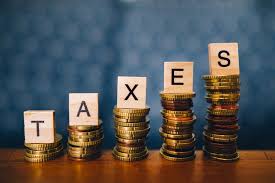
Oklahoma Treasurer Randy McDaniel says in spite of lower oil and gas prices, the state’s latest gross receipts for February showed still more growth in the state’s economy. And the growth was reflected for the 23rd consecutive month.
Gross production taxes on oil and natural gas generated $105.7 million in February or $38.9 million more than February of 2018. It represented a 58.3 percent increase. Compared to January, the February collections from oil and gas were up $5.6 million or 5.6 percent.collections from the same month of last year.
“Oklahoma’s economic expansion continues, and so far is not showing a major impact from the volatility in energy prices,” Treasurer McDaniel said. “My hope is that during these times of revenue growth, state policymakers will find ways to save for the future needs of our state.”
February gross production tax payments reflect oil field activity in December, when West Texas Intermediate crude oil at Cushing averaged $49.52 per barrel. Oil prices are down by more than $21 per barrel, or 30 percent, from the most recent peak last July.
In spite of energy price fluctuations, all major revenue streams in February show higher collections than those of a year ago, continuing a growth trend that began in April 2017.
Total collections from the past 12 months are up by more than 12 percent over the prior 12 months and have reached a new record high of almost $13.2 billion. During the past 12 months, all major revenue sources show growth ranging from 4 percent in motor vehicles tax collections to almost 80 percent in gross production receipts.
New Tax Revenue
Revenue generated by increased tax rates approved in House Bill 1010 during special session last year added $50.7 million to monthly collections, 5.2 percent of all February gross receipts.
The largest amount, $33.1 million, came from the increase in the incentive tax rate on oil and natural gas gross production. Higher tax rates on gasoline and diesel fuel generated $7.1 million, and the $1 per pack hike in cigarette taxes added $10.5 million to February’s total.
Other indicators
The Oklahoma Business Conditions Index has topped growth neutral for 19 consecutive months. The February index was set at 58.1, up from 57.1 in January. Numbers above 50 indicate anticipated economic growth during the next three to six months.
Oklahoma unemployment numbers for January will not be released until March 11 by the Employment Security Commission. The state’s seasonally adjusted unemployment rate of 3.2 percent in December was down by one-tenth of a percentage point from November.
February collections
February gross collections total $971.5 million, up $94.2 million, or 10.7 percent, from February 2018.
Gross income tax collections, a combination of individual and corporate income taxes, generated $290.5 million, an increase of $16.8 million, or 6.1 percent, from the previous February.
Individual income tax collections for the month are $279.3 million, up by $10.9 million, or 4 percent, from the prior year. Corporate collections are $11.2 million, an increase of $5.9 million, or 112.7 percent.
Sales tax collections, including remittances on behalf of cities and counties, total $368.7 million in February. That is $5.6 million, or 1.5 percent, more than February 2018.
Gross production taxes on oil and natural gas generated $105.7 million in February, an increase of $38.9 million, or 58.3 percent, from last February. Compared to January reports, gross production collections are up by $5.6 million, or 5.6 percent.
Motor vehicle taxes produced $57.2 million, up by $4 million, or 7.5 percent, from the same month of 2018.
Other collections, consisting of about 60 different sources including use taxes, along with taxes on fuel, tobacco, and alcoholic beverages, produced $149.4 million during the month. That is $28.9 million, or 24 percent, more than last February.
Twelve-month collections
Gross revenue totals $13.2 billion from the past 12 months. That is $1.4 billion, or 12.3 percent, more than collections from the previous 12 months.
Gross income taxes generated $4.4 billion for the period, reflecting an increase of $292.8 million, or 7.1 percent, from the prior 12 months.
Individual income tax collections total $3.9 billion, up by $202.2 million, or 5.4 percent, from the prior 12 months. Corporate collections are $510.4 million for the period, an increase of $90.6 million, or 21.6 percent, over the previous period.
Sales taxes for the 12 months generated $4.9 billion, an increase of $342.3 million, or 7.6 percent, from the prior period.
Oil and gas gross production tax collections brought in $1.1 billion during the 12 months, up by $472.9 million, or 79.6 percent, from the previous period.
Motor vehicle collections total $789.7 million for the period. This is an increase of $30.3 million, or 4 percent, from the trailing period.
Other sources generated $2 billion, up by $305.8 million, or 17.8 percent, from the previous year.
About Gross Receipts to the Treasury
The Office of the State Treasurer developed the monthly Gross Receipts to the Treasury report in order to provide a timely and broad view of the state’s macro economy.
It is released in conjunction with the General Revenue Fund allocation report from the Office of Management and Enterprise Services, which provides important information to state agencies for budgetary planning purposes.
The General Revenue Fund receives less than half of the state’s gross receipts with the remainder paid in rebates and refunds, remitted to cities and counties, and apportioned to other state funds.





